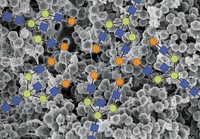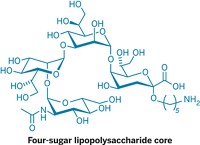Advertisement
Grab your lab coat. Let's get started
Welcome!
Welcome!
Create an account below to get 6 C&EN articles per month, receive newsletters and more - all free.
It seems this is your first time logging in online. Please enter the following information to continue.
As an ACS member you automatically get access to this site. All we need is few more details to create your reading experience.
Not you? Sign in with a different account.
Not you? Sign in with a different account.
ERROR 1
ERROR 1
ERROR 2
ERROR 2
ERROR 2
ERROR 2
ERROR 2
Password and Confirm password must match.
If you have an ACS member number, please enter it here so we can link this account to your membership. (optional)
ERROR 2
ACS values your privacy. By submitting your information, you are gaining access to C&EN and subscribing to our weekly newsletter. We use the information you provide to make your reading experience better, and we will never sell your data to third party members.
Biological Chemistry
The Real Typhoid Culprit
Molecular Biology: Lone protein toxin—now a drug target—brings on dramatic disease state, researchers say
by Stu Borman
July 11, 2013
| A version of this story appeared in
Volume 91, Issue 28

Most human infections of Salmonella bacteria cause upset stomach, diarrhea, and vomiting. But the Typhi strain of Salmonella is much worse. It causes typhoid, which each year kills more than 200,000 people worldwide. Most deaths occur in developing countries where people do not receive antibiotics in time to cure the illness.
Now, researchers have used mouse studies to find that a toxic protein complex produced by the bacterium—even in the absence of the microbe itself—causes most typhoid symptoms such as lethargy, stupor, and weight loss and leads to death (Nature 2013, DOI: 10.1038/nature12377).
The one major symptom not linked solely to this toxin is typhoid’s characteristic high fever. The researchers also determined the complex’s atomic-resolution crystal structure for the first time.
The study could lead to new antibiotics and vaccines to fight typhoid. The Salmonella strain that produces the toxin has developed resistance to some existing antibiotics, and vaccines against typhoid have limited efficacy.
Typhoid toxin is a protein complex produced by Salmonella Typhi when it infects animals and people. The complex was discovered in 2004 by the same research team that carried out the new study, Jorge E. Galán’s group at Yale University School of Medicine. When the toxin enters cells, it damages host DNA and halts cell growth and replication, thus producing many of the disease symptoms.
The toxin’s structure has an exceptional feature: Two of its three subunits, CdtB and PltA, are connected by only a single disulfide linkage. This tenuous link is “a striking departure from other known toxin structures,” says structural microbiologist C. Erec Stebbins of Rockefeller University in a commentary about the work. The CdtB-PltA subunits nestle into the toxin’s third component, the bowl-shaped PltB subunit.
Galán and coworkers find that the toxin’s disease effects are activated primarily by CdtB and that PltB aids the toxin’s entry into cells by interacting with cell-surface glycoproteins. PltA’s functional role remains unclear.
The Yale researchers also used carbohydrate arrays to identify specific types of cell-surface glycoproteins the toxin has to latch onto to gain entry into host cells.
With most of typhoid’s symptoms pegged to CdtB, that means the fever associated with typhoid is almost certainly caused by lipopolysaccharides on the bacterial surface, says James C. Paton, director of the Research Centre for Infectious Diseases at the University of Adelaide, in Australia. So the bacterium’s CdtB and lipopolysaccharide components together may “account for the full spectrum of pathology,” he says, providing a guideline for future drug and vaccine design.
This report is “the first time the virulence of an organism has been directly linked to the ability of bacteria to induce cellular DNA damage in a host,” Stebbins notes. “Our enhanced understanding of the role of the CdtB subunit in S. Typhi virulence may open doors to new pharmacological interventions and improved vaccines for an infection for which there are no robust immunization approaches.”





Join the conversation
Contact the reporter
Submit a Letter to the Editor for publication
Engage with us on Twitter